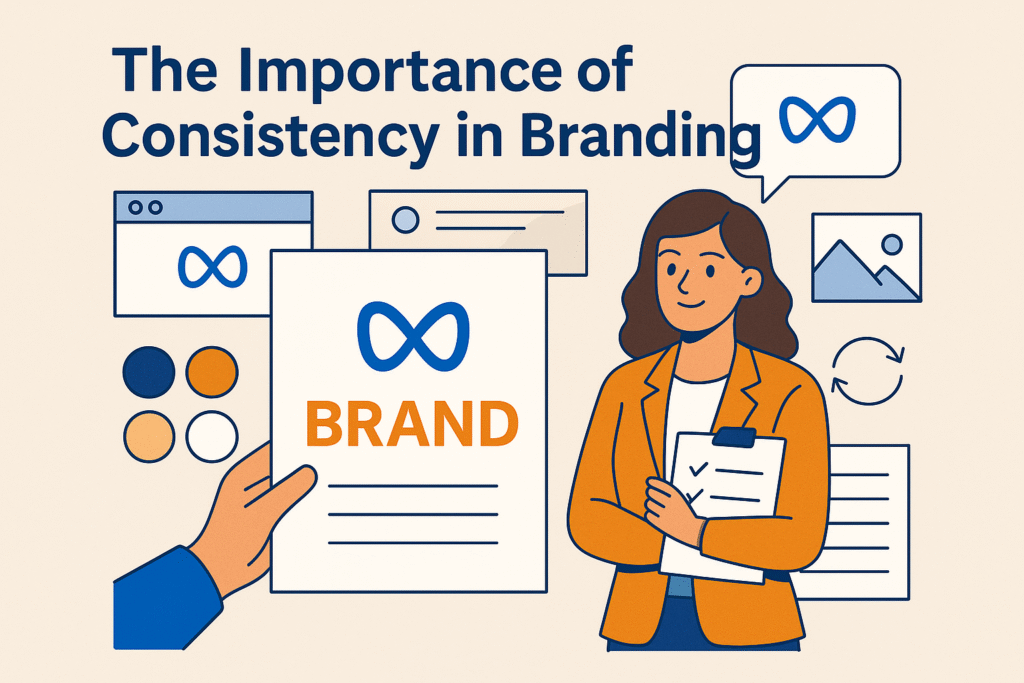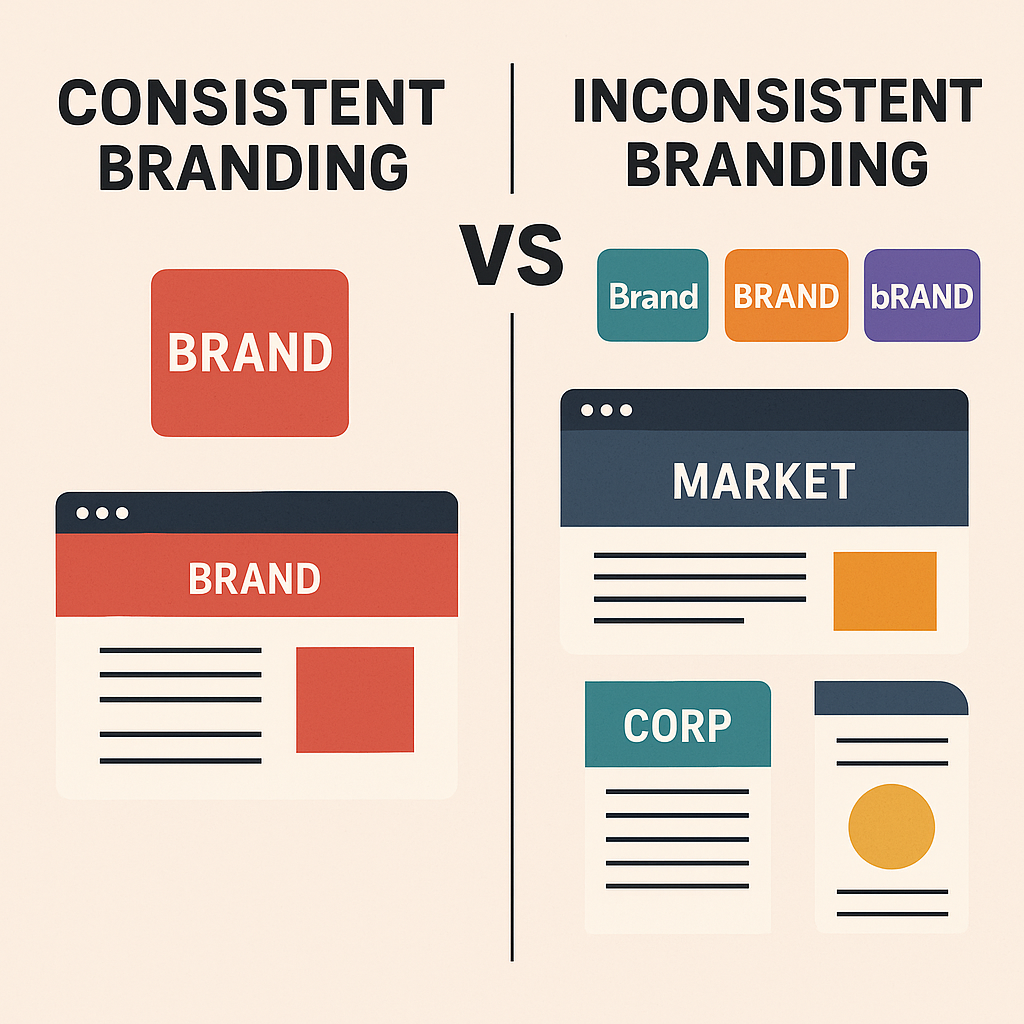Table of Contents
Introduction
In the fast-paced world of digital marketing, consistency in branding is often overlooked — yet it plays a crucial role in how a business is perceived. From logos to tone of voice, consistent branding builds recognition, trust, and loyalty.
Whether you’re a small startup or a well-established enterprise, maintaining consistency across every touchpoint is non-negotiable if you aim for long-term success.

what does consistency in branding mean?
Brand consistency refers to delivering messages in line with the core brand values, identity, and visuals every single time. This includes your logo, typography, colors, brand voice, customer experience, and even posting style on social media.
When a brand maintains uniformity across platforms and materials, it creates a cohesive image that customers can easily recognize and connect with.
Why is it important?
Builds trust and recognition.
Customers are bombarded with information every day. A consistent brand cuts through the noise. When consumers repeatedly see a logo or hear a familiar tone of voice, they’re more likely to trust and remember the brand.
For example, think of **Apple** — its clean design and minimalist tone is instantly recognizable. From advertisements to packaging, Apple ensures a consistent experience that strengthens customer trust.
Enhances professionalism
A brand that appears scattered with different fonts, colors, or inconsistent messaging can appear unprofessional. On the other hand, shows that you’re reliable and serious about your business.
Increases brand equity
The more consistent your branding, the more valuable it becomes. Customers begin to associate your brand with quality, reliability, and emotion. This brand equity can be a huge advantage when launching new products or expanding to new markets.

Ways to maintain consistency.
• Create a clear brand style guide with your fonts, color palette, tone, and logo rules.
• Use tools like Canva or Figma to design templates for social media and presentations.
• Educate your team about your brand values and how to represent them.
• Review and audit your brand materials regularly to catch inconsistencies.
Core areas where consistency matters.
1. Visual Elements
Logos, color schemes, font styles, and design elements must be identical across digital and print mediums. Creating a **brand style guide** can help maintain visual alignment.
2. Brand Voice and Messaging
Whether it’s a blog post, a tweet, or customer support interaction — the tone of voice should stay the same. If your brand is friendly and casual on Instagram but overly formal in emails, it confuses your audience.
3. Website and Social Media Presence
Your website should mirror the same visuals and tone of your social media channels. Cohesiveness in layouts, bio sections, and visuals reinforces brand recall.
4. Customer Experience
Branding isn’t just how you look and sound. It’s how people feel when interacting with you. Train your team to reflect your brand’s values in communication and service.
Real world example.

Coca-Cola is one of the most consistent brands in the world. For decades, they’ve kept the same red-and-white color scheme, cursive font, and feel-good messaging. Whether you’re in India or the U.S., the brand experience remains identical — which is exactly why they’re a household name.
Read more about How to Build a Strong Brand Identity]
https://delitsmotionpicture.com/blog/how-to-build-a-strong-brand-identity-from-scratch
Lucidpress Report on Brand Consistency – https://www.marq.com/blog/brand-consistency
Neil Patel’s Guide to Branding – https://neilpatel.com/blog/branding/
FAQs
What are the risks of inconsistent branding?
It confuses customers, weakens trust, and dilutes your brand identity.
Is visual branding more important than messaging
Both are equally important. Visuals grab attention, but messaging builds connection.
Can small businesses afford to maintain consistency?
Absolutely. Consistency isn’t about budget — it’s about discipline and attention to detail.
How often should I update my brand guidelines?
Review them annually or whenever there’s a significant change in your business.
Summary
In a world full of distractions and competition, the most successful brands are those that show up the same way — every single time. Branding consistency is not a one-time effort; it’s a long-term strategy that enhances recognition, builds loyalty, and increases your brand’s perceived value. Whether you’re crafting your first logo or refining your 10th ad campaign, ensure consistency is at the core of every decision.